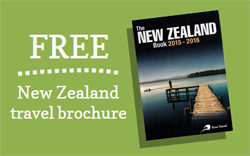Long journeys with children are often a source of dread or worry for parents – at any age kids can get fussy, irritable and squabble between themselves during long car rides.
To make your trip more enjoyable, we’ve compiled a guide of the top tips we’ve accumulated for traveling with babies, toddlers and/or older children.

Priority: safety and comfort in the car

Even before you leave, make sure everyone is well-rested and ready to go. Packing the day before ensures nothing has been missed and adequate rest is the best way to start a journey.
Loose-fitting clothing is a good idea during a journey as this gives everyone (especially children) room to move, comfort and prevents uncomfortable pinching or gathering.Everyone usually only has one seat during a car ride and being uncomfortable from the start is a recipe for disaster. In New Zealand, all children up to the age of 7, or until they are taller than 148cm (approx. 4 feet 9 inches) must ride in an age-appropriate car seat or booster seat. Until the age of around 15 they are also safer sitting in the back seat of a car.
Pack in clothes, snacks and clean-up supplies
It’s a no-brainer to pack so the things you’ll need during the trip are on top of bags or easily accessible.
Clothes and covers
Prepare for weather to change (as it often does in NZ) and keep spare/ warm clothes handy. Blankets and pillows come in handy if children want to sleep. Pillows can also be used to create a divide between kids so they can have their own space if need be.

Snacks
Along with any of your children’s favourite snacks, try these ideas:
- Individually packaged snacks (bonus if they're crumb-free)
- Fruit and berries
- Trail mix
- Fruit roll-ups or leathers
- Slices of cheese or nuts
- Green apples, ginger beer/ginger foods, dry crackers and peppermints are great for easing upset stomachs
Be ready for mess and sickness
Many children get carsick, especially on some of New Zealand’s winding roads. Ensure preventative medication is taken before the trip if needed. Carsickness or motion sickness symptoms primarily consist of headaches, queasiness and vomiting. Opening windows, looking out a window and touching a cool/cold window can help ease these symptoms.
Baby/moist wipes are a must. An ice-cream container with a plastic bag is useful for catching vomit if it’s too late to stop, and the plastic lining makes it easy to clean.
Taking breaks
Aim for a break every 1-3 hours, depending on the age of your children. Let them run around and release some energy before hopping back in the car. Fresh air also helps relieve any upset stomachs. If you have a baby, let them roll around on a mat for a while to stretch their muscles. You should also take turns driving, if possible.
A great tip for those with kids who are still toilet-training is to carry a portable potty with a disposable diaper or similar in the bottom. This works if you can’t find a public toilet and the absorbent diaper reduces spills and smells and makes for easy waste disposal.
Entertainment
The key to entertaining children is fun and distraction. If their hands and/or minds are busy, there will be fewer arguments and grizzling.
Entertaining babies
- Place a mirror in front of them. In a rear-facing seat, you’ll be able to see them easily too
- Entertain with a puppet, have the puppet talk to them, nibble toes, etc.
- Sing or play music – studies show classical music is not only enjoyable, but also calming
- Play peek-a-boo
- Older babies can practice learning parts of the body. Where’s your nose?
Entertaining toddlers

- I spy
- Colouring
- Audio books
- Singing/telling jokes
- Car counting games – a certain number of a certain colour or type of vehicle, the most someone can get in five minutes, etc.
- A simple buried treasure hunt: place a few items like buttons or small toys in a jar, fill with rice and seal tightly. Encourage kids to try and find as many things as they can while turning/shaking the jar
Entertaining older children
- Make a map and see if they can follow the route
- Who am I? Someone thinks of a person and the rest of the passengers have 20 yes or no questions to ask the player and guess who the person is.
- Car trip bingo – we’ve created a special bingo board designed specifically for car rides. View the bingo board here and print it out for your family.
- ABC game – pick something like grocery/food items or animals and each person has a turn at saying their answer in order. For example, A apple, B banana, C cabbage and so on.
- Fortunately-unfortunately: this is great for encouraging creativity and positivity. For example, one person starts by saying “unfortunately, there’s a lion in the car” and the next person counters with “fortunately, I took lion taming lessons”.
Happy children in a car make a long trip much easier and a lot less stressful. There will always be challenging moments when it comes to traveling with children. But the time spent traveling together as a family is rewarding and provides the opportunity to create memories for a lifetime.

We hope these tips are helpful – do you have any other ideas? We’d love to know! Tell us about them in a comment below.
Picture credits:
Kids in the boot by Ben Francis, CC-BY-2.0
Asa in carseat by Eric Hamiter, CC-BY-2.0
Lunch in the Boon Trunk by Melissa, CC-BY-2.0
Commuting with kids by woodleywonderworks, CC-BY-2.0
Kids ready for family trip by State Farm, CC-BY-2.0







